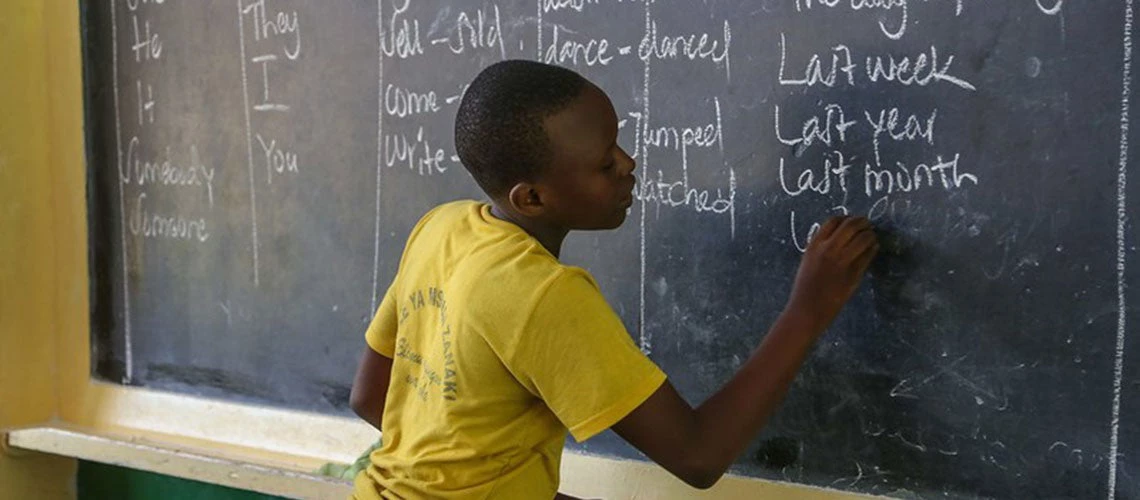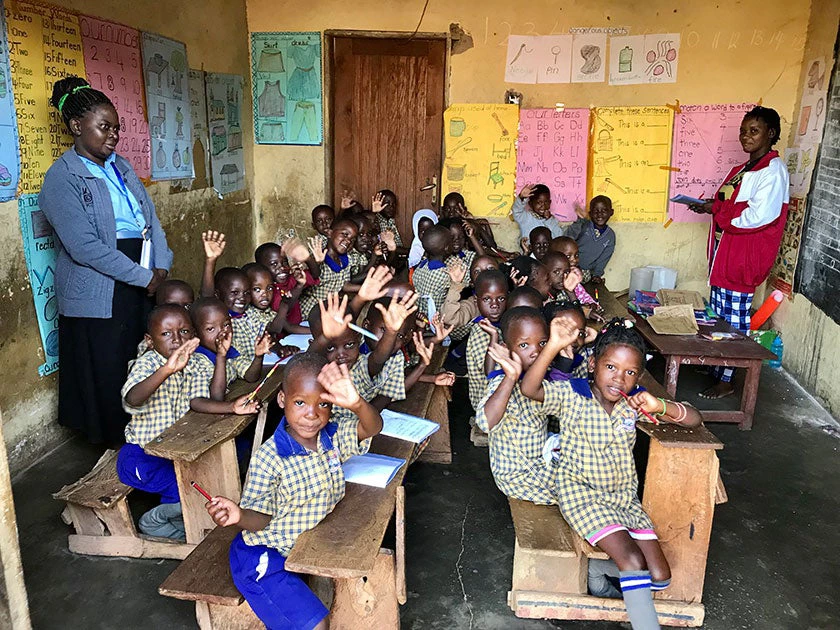 Rewarding the best and supporting the rest: Financing education in Uganda's 135 districts
Rewarding the best and supporting the rest: Financing education in Uganda's 135 districts
Mr Alex Kakooza is the Permanent Secretary at the Ministry of Education and Sports (MoES) in Uganda. His role is to ensure that resources for education are made available to all districts across the country to guarantee access to schools and quality of learning. Mr Kakooza is acutely aware how complex this task is to deliver in one district, let alone all 135 districts across Uganda.
In 1997, Uganda introduced universal primary education, and in the years since, the number of children attending primary school has tripled. But attendance alone is not enough. While more children start at primary school today, the proportion who complete their education has decreased, from 64% in 2011 to 62% in 2016. And there is a need to improve learning. The country’s National Assessment of Progress in Education (NAPE) records a 14-percentage decrease in literacy between 2014 and 2018. For the MoES, ensuring that the large inflow of students completes quality education is a priority. It is especially critical to recover any COVID-19-related learning losses as children return to classrooms.
To re-capture gains of expanded access, the Government of Uganda has begun to make important investments in existing primary and new secondary schools. This has recently been accompanied by an ambitious reform agenda, aiming to improve education quality and the impact of the additional investments.
A central pillar of this agenda is the Uganda Intergovernmental Fiscal Transfers (UgIFT) Program, implemented by the Government of Uganda with co-financing from the World Bank. UgIFT aims to bring quality enhancements to key service delivery sectors like education, health, micro-irrigation and drinking water. But these quality enhancements are only feasible if districts have sufficient financing. Since its inception in 2017 UgIFT has generated promising results. For instance, district financing to cover school operational costs increased by 41 % in 2019/20 compared to the previous year. This has translated to a 60% increase in per pupil funding across primary schools in Uganda.
To address equity issues, the MoES ensures that underserved districts have the necessary financing to improve their performance, and that this financing is more equitably distributed. To supplement funding provided on a per-pupil basis, a targeted set of factors determines a district's access to additional financing. This includes historically poor performance in learning outcomes. Geographical factors matter too, because they increase the costs of delivering services to students. Thus, remote regions, such as islands or mountainous districts, receive extra help. Districts which share their services with vast refugee populations are also given financial support, as will districts whose schools are under-staffed.
But if performing poorly can bring extra financing to districts, why bother performing well?

To incentivise improvements, the MoES is providing more financing to districts that do better on key performance metrics. These metrics are measured through annual district level performance assessments that evaluate and reward, for example, better teacher allocation within districts, reduced student and teacher absenteeism, and better-quality school infrastructure.
Under UgIFT, districts that do perform better will receive extra financing for school expansion and classroom upgrades. By the end of UgIFT, the government will finance the construction of over 250 new secondary schools, upgrade approximately 1,000 classrooms, and build 284 laboratories to balance the Government's priority of expanding access, while investing in quality. Thus far, 117 newly constructed secondary schools are expected to be operational in the next school year.
The UgIFT design thus envisions a system under which it pays off more for districts to do well. At the same time, it does not leave underperforming districts behind.
More funding alone may not translate into better school performance. Non-fiscal interventions such as implementing stricter school level assessments, disclosing school rankings, and introducing improved teacher and pupil attendance monitoring through tablet-based biometric check-ins are part of the reform package under UgIFT. Lowest performing districts will also receive non-financial performance improvement support from the MoES through additional capacity building measures.
The impact of these reforms can be transformative. It will enable the Government of Uganda to provide better, more targeted and, crucially, fairer support to all districts across the country. The expectation is that such support will lead to equity gains and translate to better learning outcomes of students. It will also empower districts in Uganda so that in the future the entire education system, from the central to the school level will be fully performance based, where strong performers are rewarded but without leaving the weaker ones behind.



Join the Conversation